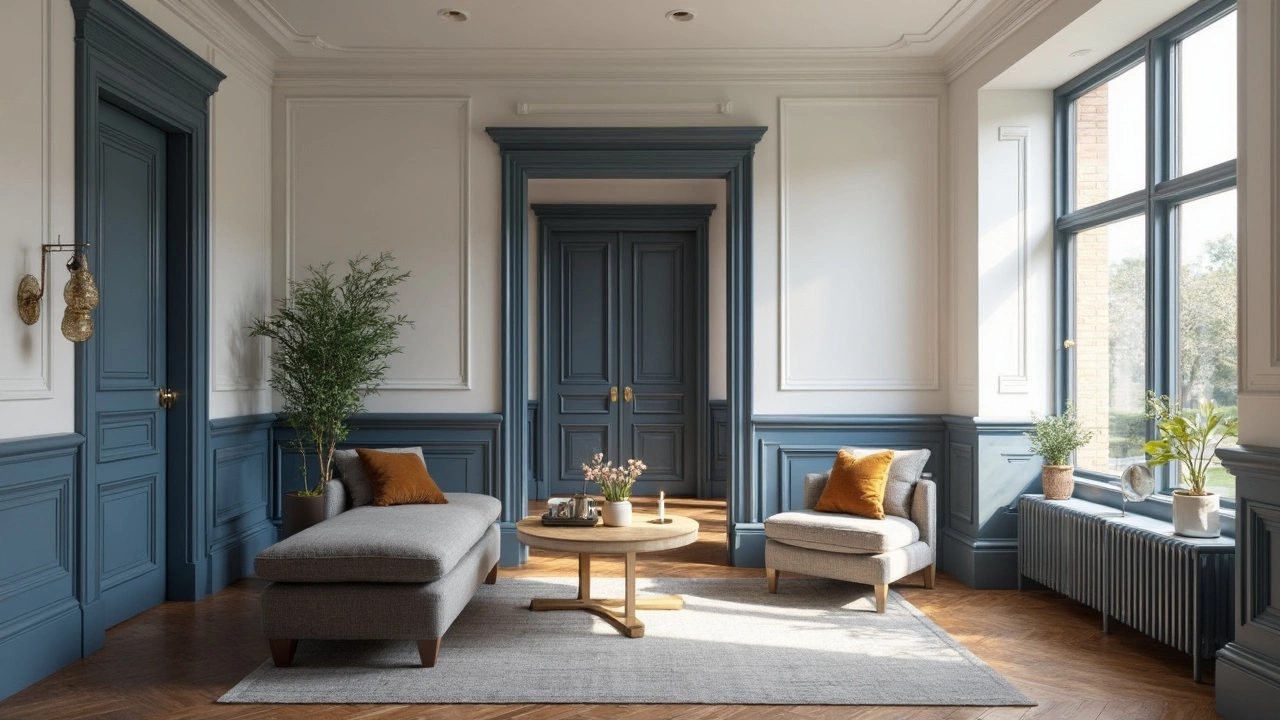Interior Trim Ideas & Tips – Turn Simple Walls into Stylish Spaces
If you want a quick win that makes a room feel richer, interior trim is the answer. A piece of molding can hide rough edges, frame windows, and give a room a finished look without a full remodel. The best part? You don’t need a designer or a huge budget to add it.
Common Types of Interior Trim
There are a handful of trim styles that fit most homes. Baseboards run along the floor and protect walls from scuffs; they’re also a chance to add a subtle design cue. Crown molding sits where walls meet the ceiling and can make a low ceiling feel higher or add drama to a high one. Chair rails run halfway up a wall; they’re perfect for breaking up a large space or for adding a paint‑stop. Window and door casings frame openings and tie the whole room together.
Materials vary too. MDF is cheap and easy to paint, while wood offers natural grain and a classic feel. PVC is water‑resistant, making it a great choice for bathrooms or basements. When you pick a material, think about where the trim will live and how much maintenance you’re willing to do.
Style matters as well. Simple beveled edge trims suit modern homes, while ornate ogee profiles match traditional interiors. Look at the architecture of your house; a Victorian‑style home will feel out of place with ultra‑minimal trim, while a sleek condo can handle a clean, straight line.
Easy DIY Trim Installation Tips
You don’t need a pro to hang trim, just a few tools and a bit of patience. Start by measuring the wall length and cutting the trim to size with a miter saw. A 45‑degree angle at corners gives a clean look, but if you’re nervous, a simple butt joint works fine.
Use a stud finder to locate the studs and nail the trim into them. A nail gun speeds things up, but a hammer and finish nails work too. After nailing, fill any nail holes with paint‑able wood filler. Sand smooth, then prime and paint – matching the existing wall colour or going bold for a statement.
When you’re working around windows, measure the opening first, cut the casing, and fit it inside the frame before securing. A little caulk around the edges hides gaps and keeps drafts out. For baseboards, leave a small gap at the floor (about 1/4 inch) so the paint doesn’t chip when the floor expands.
Safety tip: wear eye protection and a dust mask when cutting. And always double‑check measurements – a cut too short means extra joints, which look messy.
Even if you’re not a DIY fan, you can still upgrade trim by swapping out old pieces for new ones. Removing old paint with a scraper and repainting the trim fresh can make a room feel brand new. Pair this with a new flooring choice from First Choice Flooring Solutions, and you’ve got a coordinated look that impresses.
Bottom line: interior trim is a low‑cost, high‑impact way to boost any space. Pick the right style, measure carefully, and you’ll get a professional finish that makes your home feel polished. Ready to start? Grab a piece of trim, a saw, and see how a simple detail can change the whole room.
Trim Trend 2024: What’s Hot for Modern Home Interiors
- Gavin Whitaker
- |
- |
- 0
Wondering what’s happening with trim styles in 2024? This article breaks down the latest trends for interior trim, from bold accent choices to understated profiles. You’ll get tips on how pros are using trim to shape the whole vibe of a space. Dive into practical advice and inspiring examples for your next home update. Whether you love classic or crave modern, these trends have something for everyone.
View more